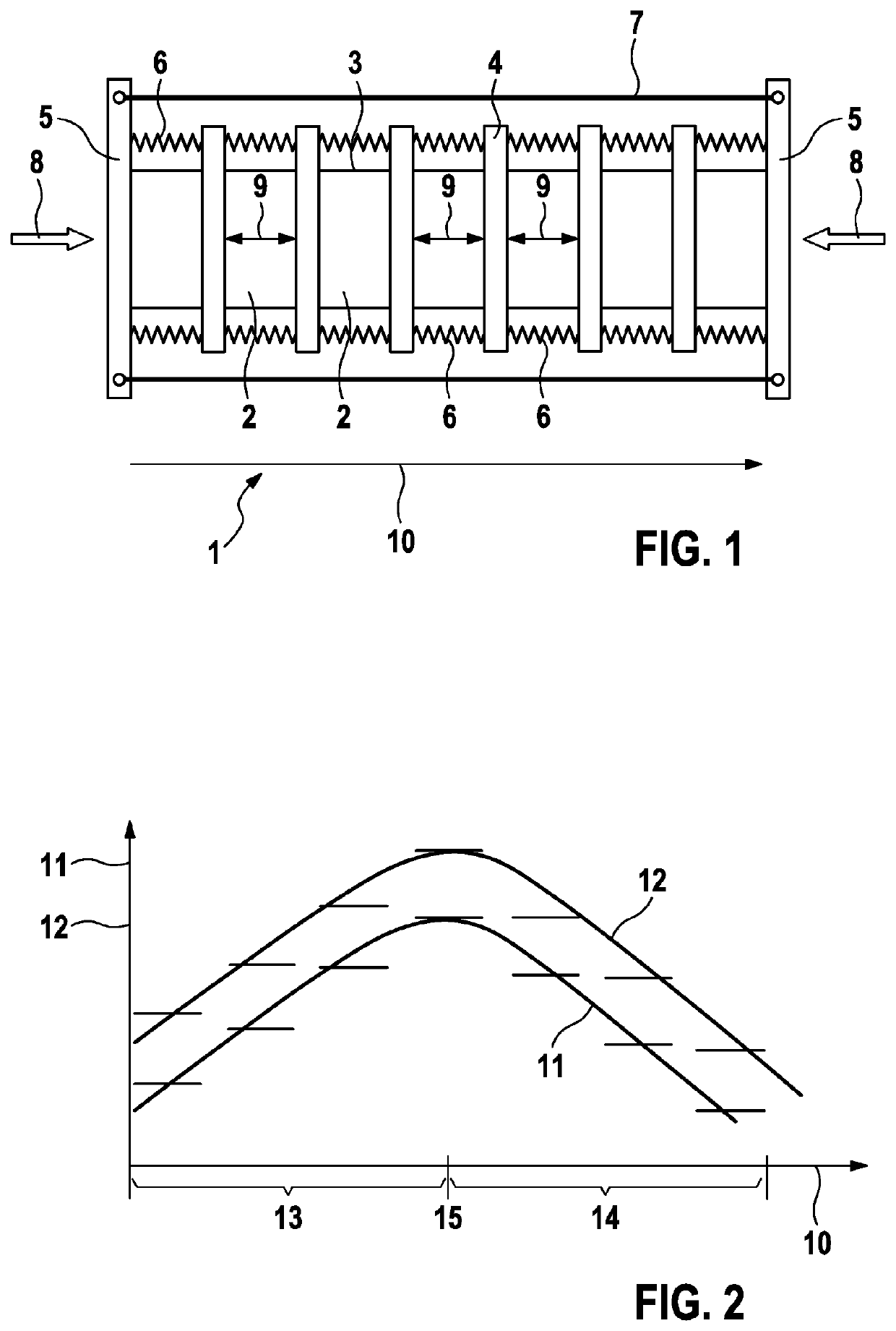Battery module having a plurality of battery cells, method for the production thereof, and battery
a battery module and battery technology, applied in the manufacture of final products, cell components, cell component details, etc., can solve the problem of individual battery cells not remaining
- Summary
- Abstract
- Description
- Claims
- Application Information
AI Technical Summary
Benefits of technology
Problems solved by technology
Method used
Image
Examples
Embodiment Construction
[0027]FIG. 1 shows schematically an embodiment of a battery module 1 according to the invention in a side view. In this case the battery module 1 shown in FIG. 1 preferably exhibits a plurality of spring elements 6.
[0028]The battery module 1 exhibits a plurality of battery cells 2, said battery module 1 shown in FIG. 1 exhibiting, for instance, seven battery cells 2. A battery cell 2 preferably exhibits a battery-cell housing 3 in which the electrochemical components, not shown here, of the battery cell 2 are accommodated.
[0029]Moreover, it can be discerned from FIG. 1 that the battery module 1 further exhibits a plurality of partitions 4, said battery module 1 shown in FIG. 1 exhibiting, for instance, six partitions 4. In particular, it can be discerned from FIG. 1 that the number of battery cells 2 is greater by one than the number of partitions 4.
[0030]Furthermore, the battery module 1 exhibits two end plates 5, with the battery cells 2 and the partitions 4 being arranged between...
PUM
| Property | Measurement | Unit |
|---|---|---|
| force | aaaaa | aaaaa |
| modulus of elasticity | aaaaa | aaaaa |
| bulk modulus | aaaaa | aaaaa |
Abstract
Description
Claims
Application Information
 Login to View More
Login to View More - R&D
- Intellectual Property
- Life Sciences
- Materials
- Tech Scout
- Unparalleled Data Quality
- Higher Quality Content
- 60% Fewer Hallucinations
Browse by: Latest US Patents, China's latest patents, Technical Efficacy Thesaurus, Application Domain, Technology Topic, Popular Technical Reports.
© 2025 PatSnap. All rights reserved.Legal|Privacy policy|Modern Slavery Act Transparency Statement|Sitemap|About US| Contact US: help@patsnap.com

